#Freddie Miles
Explore tagged Tumblr posts
Text

danse macabre
103 notes
·
View notes
Video
tumblr
lol two queens in the shade room
#can anyone spot the 3rd queer in the room?#philip seymour hoffman#matt damon#tom ripley#freddie miles#the talented mr ripley#the talented mr. ripley#horroredit#perioddramaedit#queer characters#lgbt#patricia highsmith#anthony minghella#1950s#psychological thriller#hitchcockian#period drama
465 notes
·
View notes
Text

1965 FIAT 500F
#1964 FIAT 500D#FIAT#FIAT 500#NUOVA 500#CINQUECENTO#CLASSIC CARS#ITALIAN CARS#ITALIAN CLASSICS#VETERANBIL#CARSPOTTING#CLASSIC ITALIAN CARS#RIPLEY#TOM RIPLEY#FREDDIE MILES
57 notes
·
View notes
Text
Freddie Miles really accused Tom of golddigging, homosexuality, left, came back, and was bonked over the head with an ashtray rest in peace
29 notes
·
View notes
Text
Feeling a bit down so I treat myself to the wonderful sights that are Johnny Flynn and Eliot Sumner on stage, playing violin and electric guitar respectively

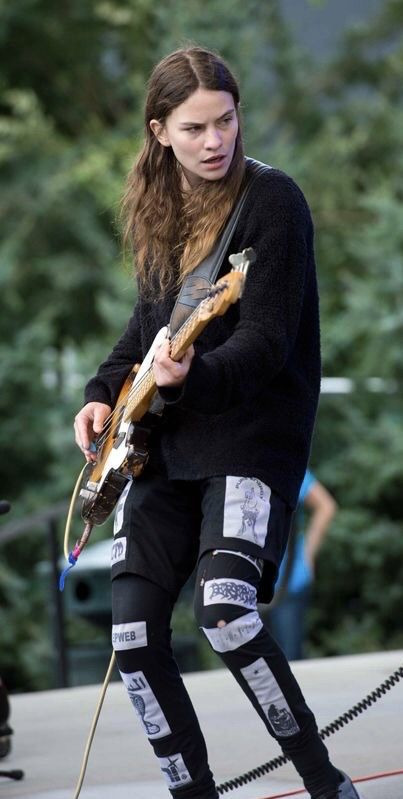
They both look so wild and untamed in their own unique way @turniptitaness @denimbex1986
#I know it's a bass#johnny flynn#eliot sumner#ripley 2024#ripley actors#if you can find Scott or Dakota playing an instrument alert me cause I sure can't find anything#ripley netflix#freddie miles#dickie greenleaf
47 notes
·
View notes
Text
'Is Tom Ripley gay? For nearly 70 years, the answer has bedeviled readers of Patricia Highsmith’s 1955 thriller The Talented Mr. Ripley, the story of a diffident but ambitious young man who slides into and then brutally ends the life of a wealthy American expatriate, as well as the four sequels she produced fitfully over the following 36 years. It has challenged the directors — French, British, German, Italian, Canadian, American — who have tried to bring Ripley to the screen, including in the latest adaptation by Steven Zaillian, now on Netflix. And it appears even to have flummoxed Ripley’s creator, a lesbian with a complicated relationship to queer sexuality. In a 1988 interview, shortly before she undertook writing the final installment of the series, Ripley Under Water, Highsmith seemed determined to dismiss the possibility. “I don’t think Ripley is gay,” she said — “adamantly,” in the characterization of her interviewer. “He appreciates good looks in other men, that’s true. But he’s married in later books. I’m not saying he’s very strong in the sex department. But he makes it in bed with his wife.”
The question isn’t a minor one. Ripley’s killing of Dickie Greenleaf — the most complicated, and because it’s so murkily motivated, the most deeply rattling of the many murders the character eventually commits — has always felt intertwined with his sexuality. Does Tom kill Dickie because he wants to be Dickie, because he wants what Dickie has, because he loves Dickie, because he knows what Dickie thinks of him, or because he can’t bear the fact that Dickie doesn’t love him? Ordinarily, I’m not a big fan of completely ignoring authorial intent, and I’m inclined to let novelists have the last word on factual information about their own creations. But Highsmith, a cantankerous alcoholic misanthrope who was long past her best days when she made that statement, may have forgotten, or wanted to disown, her own initial portrait of Tom Ripley, which is — especially considering the time in which it was written — perfumed with unmistakable implication.
Consider the case that Highsmith puts forward in The Talented Mr. Ripley. Tom, a single man, lives a hand-to-mouth existence in New York with a male roommate who is, ahem, a window dresser. Before that, he lived with an older man with some money and a controlling streak, a sugar daddy he contemptuously describes as “an old maid”; Tom still has the key to his apartment. Most of his social circle — the names he tosses around when introducing himself to Dickie — are gay men. The aunt who raised him, he bitterly recalls, once said of him, “Sissy! He’s a sissy from the ground up. Just like his father!” Tom, who compulsively rehearses his public interactions and just as compulsively relives his public humiliations, recalls a particularly stinging moment when he was shamed by a friend for a practiced line he liked to use repeatedly at parties: “I can’t make up my mind whether I like men or women, so I’m thinking of giving them both up.” It has “always been good for a laugh, the way he delivered it,” he thinks, while admitting to himself that “there was a lot of truth in it.” Fortunately, Tom has another go-to party trick. Still nurturing vague fantasies of becoming an actor, he knows how to delight a small room with a set of monologues he’s contrived. All of his signature characters are, by the way, women.
This was an extremely specific set of ornamentations for a male character in 1955, a time when homosexuality was beginning to show up with some frequency in novels but almost always as a central problem, menace, or tragedy rather than an incidental characteristic. And it culminates in a gruesome scene that Zaillian’s Ripley replicates to the last detail in the second of its eight episodes: The moment when Dickie, the louche playboy whose luxe permanent-vacation life in the Italian coastal town of Atrani with his girlfriend, Marge, has been infiltrated by Tom, discovers Tom alone in his bedroom, imitating him while dressed in his clothes. It is, in both Highsmith’s and Zaillian’s tellings, as mortifying for Tom as being caught in drag, because essentially it is drag but drag without exaggeration or wit, drag that is simply suffused with a desire either to become or to possess the object of one’s envy and adoration. It repulses Dickie, who takes it as a sexual threat and warns Tom, “I’m not queer,” then adds, lashingly, “Marge thinks you are.” In the novel, Tom reacts by going pale. He hotly denies it but not before feeling faint. “Nobody had ever said it outright to him,” Highsmith writes, “not in this way.” Not a single gay reader in the mid-1950s would have failed to recognize this as the dread of being found out, quickly disguised as the indignity of being misunderstood.
And it seemed to frighten Highsmith herself. In the second novel, Ripley Under Ground, published 15 years later, she backed away from her conception of Tom, leaping several years forward and turning him into a soigné country gentleman living a placid, idyllic life in France with an oblivious wife. None of the sequels approach the cold, challenging terror of the first novel — a challenge that has been met in different ways, each appropriate to their era, by the three filmmakers who have taken on The Talented Mr. Ripley. Zaillian’s ice-cold, diamond-hard Ripley just happens to be the first to deliver a full and uncompromising depiction of one of the most unnerving characters in American crime fiction.
The first Ripley adaptation, René Clément’s French-language drama Purple Noon, is much beloved for its sun-saturated atmosphere of endless indolence and for the tone of alienated ennui that anticipated much of the decade to come; the movie was also a showcase for its Ripley, the preposterously sexy, maddeningly aloof Alain Delon. And therein lies the problem: A Ripley who is preposterously sexy is not a Ripley who has ever had to deal with soul-deep humiliation, and a Ripley who is maddeningly aloof is not going to be able to worm his way into anyone’s life. Purple Noon is not especially willing (or able — it was released in 1960) to explore Ripley’s possible homosexuality. Though the movie itself suggests that no man or woman could fail to find him alluring, what we get with Delon is, in a way, a less complex character type, a gorgeous and magnetic smooth criminal who, as if even France had to succumb to the hoariest dictates of the Hollywood Production Code, gets the punishment due to him by the closing credits. It’s delectable daylit noir, but nothing unsettling lingers.
Anthony Minghella’s The Talented Mr. Ripley, released in 1999, is far better; it couldn’t be more different from the current Ripley, but it’s a legitimate reading that proves that Highsmith’s novel is complex and elastic enough to accommodate wildly varying interpretations. A committed Matt Damon makes a startlingly fine Tom Ripley, ingratiating and appealing but always just slightly inept or needy or wrong; Jude Law — peak Jude Law — is such an effortless golden boy that he manages the necessary task of making Damon’s Tom seem a bit dim and dull; and acting-era Gwyneth Paltrow is a spirited and touchingly vulnerable Marge.
Minghella grapples with Tom’s sexual orientation in an intelligently progressive-circa-1999 way; he assumes that Highsmith would have made Tom overtly gay if the culture of 1955 had allowed it, and he runs all the way with the idea. He gives us a Tom Ripley who is clearly, if not in love with Dickie, wildly destabilized by his attraction to him. And in a giant departure from the novel, he elevates a character Highsmith had barely developed, Peter Smith-Kingsley (played by Jack Davenport) into a major one, a man with whom we’re given to understand that Ripley, with two murders behind him and now embarking on a comfortable and well-funded European life, has fallen in love. It doesn’t end well for either of them. A heartsick Tom eventually kills Peter, too, rather than risk discovery — it’s his third murder, one more than in the novel — and we’re meant to take this as the tragedy of his life: That, having come into the one identity that could have made him truly happy (gay man), he will always have to subsume it to the identity he chose in order to get there (murderer). This is nowhere that Highsmith ever would have gone — and that’s fine, since all of these movies are not transcriptions but interpretations. It’s as if Minghella, wandering around inside the palace of the novel, decided to open doors Highsmith had left closed to see what might be behind them. The result is the most touching and sympathetic of Ripleys — and, as a result, far from the most frightening.
Zaillian is not especially interested in courting our sympathy. Working with the magnificent cinematographer Robert Elswit, who makes every black-and-white shot a stunning, tense, precise duel between light and shadow, he turns coastal Italy not into an azure utopia but into a daunting vertical maze, alternately paradise, purgatory, and inferno, in which Tom Ripley is forever struggling; no matter where he turns, he always seems to be at the bottom of yet another flight of stairs.
It’s part of the genius of this Ripley — and a measure of how deeply Zaillian has absorbed the book — that the biggest departures he makes from Highsmith somehow manage to bring his work closer to her scariest implications. There are a number of minor changes, but I want to talk about the big ones, the most striking of which is the aging of both Tom and Dickie. In the novel, they’re both clearly in their 20s — Tom is a young striver patching together an existence as a minor scam artist who steals mail and impersonates a collection agent, bilking guileless suckers out of just enough odd sums for him to get by, and Dickie is a rich man’s son whose father worries that he has extended his post-college jaunt to Europe well past its sowing-wild-oats expiration date. Those plot points all remain in place in the miniseries, but Andrew Scott, who plays Ripley, is 47, and Johnny Flynn, who plays Dickie, is 41; onscreen, they register, respectively, as about 40 and 35.
This changes everything we think we know about the characters from the first moments of episode one. As we watch Ripley in New York, dourly plying his miserable, penny-ante con from a tiny, barren shoe-box apartment that barely has room for a bed as wide as a prison cot (this is not a place to which Ripley has ever brought guests), we learn a lot: This Ripley is not a struggler but a loser. He’s been at this a very long time, and this is as far as he’s gotten. We can see, in an early scene set in a bank, that he’s wearily familiar with almost getting caught. If he ever had dreams, he probably buried them years earlier. And Dickie, as a golden boy, is pretty tarnished himself — he isn’t a wild young man but an already-past-his-prime disappointment, a dilettante living off of Daddy’s money while dabbling in painting (he’s not good at it) and stringing along a girlfriend who’s stuck on him but probably, in her heart, knows he isn’t likely to amount to much.
Making Tom older also allows Zaillian to mount a persuasive argument about his sexuality that hews closely to Highsmith’s vision (if not to her subsequent denial). If the Ripley of 1999 was gay, the Ripley of 2024 is something else: queer, in both the newest and the oldest senses of the word. Scott’s impeccable performance finds a thousand shades of moon-faced blankness in Ripley’s sociopathy, and Elswit’s endlessly inventive lighting of his minimal expressions, his small, ambivalent mouth and high, smooth forehead, often makes him look slightly uncanny, like a Daniel Clowes or Charles Burns drawing. Scott’s Ripley is a man who has to practice every vocal intonation, every smile or quizzical look, every interaction. If he ever had any sexual desire, he seems to have doused it long ago. “Is he queer? I don’t know,” Marge writes in a letter to Dickie (actually to Tom, now impersonating his murder victim). “I don’t think he’s normal enough to have any kind of sex life.” This, too, is from the novel, almost word for word, and Zaillian uses it as a north star. The Ripley he and Scott give us is indeed queer — he’s off, amiss, not quite right, and Marge knows it. (In the novel, she adds, “All right, he may not be queer [meaning gay]. He’s just a nothing, which is worse.”) Ripley’s possible asexuality — or more accurately, his revulsion at any kind of expressed sexuality — makes his killing of Dickie even more horrific because it robs us of lust as a possible explanation. This is the first adaptation of The Talented Mr. Ripley I’ve seen in which even Ripley may not know why he murders Dickie.
When I heard that Zaillian (who both wrote and directed all of the episodes) was working on a Ripley adaptation, I wondered if he might replace sexual identity, the great unequalizer of 1999, with economic inequity, a more of-the-moment choice. Minghella’s version played with the idea; every person and object and room and vista Damon’s Ripley encountered was so lush and beautiful and gleaming that it became, in some scenes, the story of a man driven mad by having his nose pressed up against the glass that separated him from a world of privilege (and from the people in that world who were openly contemptuous of his gaucheries). Zaillian doesn’t do that — a lucky thing, since the heavily Ripley-influenced film Saltburn played with those very tropes recently and effectively. Whether intentional or not, one side effect of his decision to shoot Ripley in black and white is that it slightly tamps down any temptation to turn Italy into an occasion for wealth porn and in turn to make Tom an eat-the-rich surrogate. This Italy looks gorgeous in its own way, but it’s also a world in which even the most beautiful treasures appear threatened by encroaching dampness or decay or rot. Zaillian gives us a Ripley who wants Dickie’s life of money and nice things and art (though what he’s thinking when he stares at all those Caravaggios is anybody’s guess). But he resists the temptation to make Dickie and Marge disdainful about Tom’s poverty, or mean to the servants, or anything that might make his killing more palatable. This Tom is not a class warrior any more than he’s a victim of the closet or anything else that would make him more explicable in contemporary terms. He’s his own thing — a universe of one.
Anyway, sexuality gives any Ripley adapter more to toy with than money does, and the way Zaillian uses it also plays effectively into another of his intuitive leaps — his decision to present Dickie’s friend and Tom’s instant nemesis Freddie Miles not as an obnoxious loudmouth pest (in Minghella’s movie, he was played superbly by a loutish Philip Seymour Hoffman) but as a frosty, sexually ambiguous, gender-fluid-before-it-was-a-term threat to Tom’s stability, excellently portrayed by Eliot Sumner (Sting’s kid), a nonbinary actor who brings perceptive to-the-manor-born disdain to Freddie’s interactions with Tom. They loathe each other on sight: Freddie instantly clocks Tom as a pathetic poser and possible closet case, and Tom, seeing in Freddie a man who seems to wear androgyny with entitlement and no self-consciousness, registers him as a danger, someone who can see too much, too clearly. This leads, of course, to murder and to a grisly flourish in the scene in which Tom, attempting to get rid of Freddie’s body, walks his upright corpse, his bloodied head hidden under a hat, along a street at night, pretending he’s holding up a drunken friend. When someone approaches, Tom, needing to make his possible alibi work, turns away, slamming his own body into Freddie’s up against a wall and kissing him passionately on the lips. That’s not in Highsmith’s novel, but I imagine it would have gotten at least a dry smile out of her; in Ripley’s eight hours, this necrophiliac interlude is Tom’s sole sexual interaction.
No adaptation of The Talented Mr. Ripley would work without a couple of macabre jokes like that, and Zaillian serves up some zesty ones, including an appearance by John Malkovich, the reigning king/queen of sexual ambiguity (and himself a past Ripley, in 2002’s Ripley’s Game), nodding to Tom’s future by playing a character who doesn’t show up until book two. He also gives us a witty final twist that suggests that Ripley may not even make it to that sequel, one that reminds us how fragile and easily upended his whole scheme has been. Because Ripley, in this conception, is no mastermind; Zaillian’s most daring and thoughtful move may have been the excision of the word “talented” from the title. In the course of the show, we see him toy with being an editor, a writer (all those letters!), a painter, an art appreciator, and a wealthy man, often convincingly — but always as an impersonation. He gives us a Tom who is fiercely determined but so drained of human affect when he’s not being watched that we come to realize that his only real skill is a knack for concentrating on one thing to the exclusion of everything else. What we watch him get away with may be the first thing in his life he’s really good at (and the last moment of the show suggests that really good may not be good enough). This is not a Tom with a brilliant plan but a Tom who just barely gets away with it, a Tom who can never relax.
Tom’s sexuality is ultimately an enigma that Zaillian chooses to leave unsolved — as it remains at the end of the novel. Highsmith’s decision to turn Tom into a roguish heterosexual with a taste for art fraud before the start of the second novel has never felt entirely persuasive, and it’s clearly a resolution in which Zaillian couldn’t be less interested. Toward the end of Ripley, Tom is asked by a detective to describe the kind of man Dickie was. He transforms Dickie’s suspicion about his queerness into a new narrative, telling the private investigator that Dickie was in love with him: “I told him I found him pathetic and that I wanted nothing more to do with him.” But it’s the crushing verdict he delivers just before that line that will stay with me, a moment in which Tom, almost in a reverie, might well be describing himself: “Everything about him was an act. He knew he was supremely untalented.” In the end, Scott and Zaillian give us a Ripley for an era in which evil is so often meted out by human automatons with even tempers and bland self-justification: He is methodical, ordinary, mild, and terrifying.'
#Andrew Scott#Ripley#Matt Damon#The Talented Mr Ripley#Anthony Minghella#Steven Zaillian#Purple Noon#Alain Delon#Johnny Flynn#Dickie Greenleaf#Peter Smith-Kingsley#Jude Law#Gwyneth Paltrow#Robert Elswit#Caravaggio#Marge Sherwood#Freddie Miles#Philip Seymour Hoffman#Eliot Sumner
38 notes
·
View notes
Text
Posted this on Twitter first but might as well post on here too.
If they let me make a The Talented Mr Ripley adaptation this is who I’d cast!
#my twt username is filmdelon ermmm#yeah anyways i'm really passionate about this fancast like in my mind it's perfect#the talented mr. ripley#the talented mr ripley#tom ripley#dickie greenleaf#marge sheerwood#freddie miles#meredith logue#peter smith-kingsley#fancast#my edits#ig?'?#by me
59 notes
·
View notes
Text
One of the only good things about being middle aged is rewatching films you loved 20+ years ago that have held up. Damn, I had good taste in my early 20s!
Anthony Minghella’s The Talented Mr. Ripley is one of those films for me. It’s been well over ten years since I’ve seen it. I remember remembering it while writing a dissertation chapter about queer murderers about thirteen years ago, but I watched it today because I was in a Philip Seymour Hoffman mood. I thought there was more of him in this, and now I realize that’s because his few scenes are so memorable. The scene he shares with Matt Damon leading up to Tom murdering Freddie is my favorite not only from this movie but from his entire filmography. His bitchiness, his fabulousness, his complete contempt for this man who has been able to easily fool every single other character in the film, at least at first.
Freddie is able to look past Tom’s performance to what is true about him: his taste. Even though this is a story about a queer criminal and his (mostly) queer victims, as an unfortunately large number of 90s movies were, it is also a study in queer knowledge and, as this scene particularly shows, queer reading. We see Freddie engaging in his own performance when he first appears, jumping out of his little red convertible and loudly asking “Don’t you want to fuck every woman you see just once?” Here, he picks apart Tom’s performance--his clothes, his hair, his decor--with a contemptuous sneer and a limp wrist. He has nothing to hide here, and neither does Tom; it’s very satisfying to see him wrongfooted for once. The only thing Freddie doesn’t correctly read about him is his propensity for violence.
The rest of film is magnificent too. All of the performances by phenomenal actors (who all look like teenagers from 2023′s perspective. Damon and Gwyneth Paltrow are particularly unrecognizable). The camera work, particularly Minghella’s use of mirror image to reflect Tom’s fragmented identity. Spectacular. I’ll be rewatching this again soon!
#the talented mr. ripley 1999#anthony minghella#philip seymour hoffman#freddie miles#matt damon#tom ripley
14 notes
·
View notes
Text
17 notes
·
View notes
Text

we NEED to see the adventures of Raphael and Freddie Miles in 60s Italy
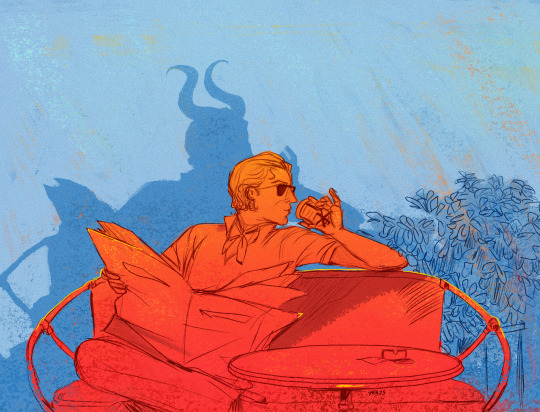
Riding on @shahs1221 's amazing idea of Italian holiday vaugely 60's but very much still a devil Raphael
2K notes
·
View notes
Text

#fnaf#michael afton#the soup speaks#miles edgeworth investigations yayyyyy#what came over me to make this? i genuinly do not know man#five nights at freddy’s
722 notes
·
View notes
Text
Tommy Boy might be the star weirdo of this here franchise but no one talks about this fucker
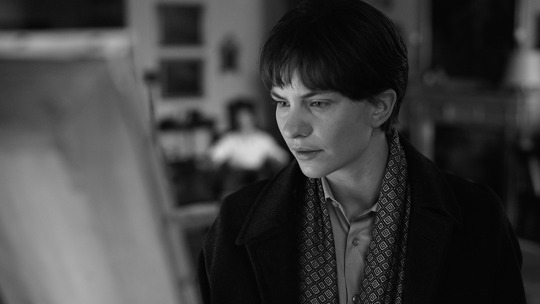
He knew what Tom was up to but instead of running to the nearest phone to call the cops he walked back up to the man he now knew had taken Dickies identity and done god knows what to his friend. He stands with his back towards Tom while accusing him of it all, talking about the initials on the watch while crudely scribbeling “Picasso” on his painting before he heads for the door all the while talking about getting the police involved. He’s just waving the cape in the bull's face by that point and he knows it.
Then, after being twacked in the head so hard he kisses the wall, Freddie, instead of alerting the other residents of the house or oh I don’t know get out of the way and crawl to safety like a normal person, decides to SWING at Tom, like he seriously thought he had a chance. Either Freddie has got the biggest set of balls in all of Italy or he is truly mad in the head and really good at hiding it.
(post inspired by something @turniptitaness said in a reblog)
#ripley#ripley 2024#ripley netflix#freddie miles#eliot sumner#andrew scott#tom ripley#character study
27 notes
·
View notes
Text
'I was about three episodes into the Netflix Ripley mini-series when I decided to read the Patricia Highsmith novel it was based on. A question about the setting of the mini-series sparked my interest in the novel. The series claimed to have been set in 1961, but it gave me feelings of post-war Italy, maybe 1949 or so.
The answer is that the Highsmith novel was published in 1955, which means that it captures a cultural sense of the mid-1950s. 1961 is not too far off from that.
By now, everyone should know that the title character, Tom Ripley, is a sociopath. The word “sociopathy” is not used in either presentation. The acting of Andrew Scott in the Netflix series captures the essence of a sociopath. Scott plays Ripley as awkward, autitistic, and anhedonic — Scott’s Ripley is one off-beat, creepy dude.
The opening scene in the Netflix series is a perfect representation of the sociopath in action. On the spur of the moment, Ripley intercepts a letter from a postal carrier by acting as if he is going into an apartment. He then uses the letter to scam the sender to send a replacement check to him by posing as a bill collector. He has to abandon the cashing of the check when he senses that he is about to be unmasked. The sequence portrays the opportunism of a lot of crime, which has to be the domain of sociopaths who do not hesitate a moment out of guilt or conscience.
In contrast, it doesn’t seem that Highsmith had a developed knowledge of sociopathy. Her Ripley is weirdly bipolar. He transitions from bouts of manic exuberance about his plans to bitter resentment about the injustices he feels he has been subjected to. Highsmith’s Ripley is not nearly as disciplined as the Netflix Ripley. In Highsmith’s novel, for example, Ripley just collects the checks from his victims without ever trying to cash them.
This could reflect the development of the idea of the sociopath/psychopath as a fictional type. We have had decades of tropes and caricatures about high-functioning sociopaths that Highsmith didn’t have. While the idea of psychopathy was introduced in the 1950s, sociopathy had been known since the 1930s.[3] One source describes the history of sociopathy as follows:
While psychopathy was yet to make its premiere in the DSM, sociopathic personality disturbance, or sociopathy, was included in the DSM-I. Sociopathy was developed in the 1930s and consisted of antisocial and dissocial reactions and sexual deviation (Pickersgill, 2012). Differences and similarities existed between sociopathic personality disorder and psychopathy, however psychopathy would not have its own category in the DSM until the publication of the DSM III. In DSM-I, sociopathic personality disturbance, antisocial reaction was defined as a diagnosis for chronically antisocial individuals who didn’t profit from experience or punishment and maintained no real loyalties (Pickersgill, 2012).
This could explain why Tom Ripley is not the smooth and charming manipulator we expect to see in more recent stories involving psychopaths.
It might also explain why Highsmith edges around the homosexual issue.
It seems clear from Highsmith’s novel that Tom is “same-sex attracted.” He is a young man (around 24 or 25) who has been “kept” by a wealthier male who treats him as a possession. Highsmith shares that Tom runs in homosexual circles and poses as a homosexual but is a virgin:
His mind went back to certain groups of people he had known in New York, known and dropped finally, all of them, but he regretted now having ever known them. They had taken him up because he amused them, but he had never had anything to do with any of them! When a couple of them had made a pass at him, he had rejected them — though he remembered how he had tried to make it up to them later by getting ice for their drinks, dropping them off in taxis when it was out of his way, because he had been afraid they would start to dislike him. He’d been an ass! And he remembered, too, the humiliating moment when Vic Simmons had said, Oh, for Christ sake, Tommie, shut up! when he had said to a group of people, for perhaps the third or fourth time in Vic’s presence, “I can’t make up my mind whether I like men or women, so I’m thinking of giving them both up.” Tom had used to pretend he was going to an analyst, because everybody else was going to an analyst, and he had used to spin wildly funny stories about his sessions with his analyst to amuse people at parties, and the line about giving up men and women both had always been good for a laugh, the way he delivered it, until Vic had told him for Christ sake to shut up, and after that Tom had never said it again and never mentioned his analyst again, either. As a matter of fact, there was a lot of truth in it, Tom thought. As people went, he was one of the most innocent and clean-minded he had ever known. That was the irony of this situation with Dickie.
Highsmith, Patricia. The Talented Mr. Ripley (pp. 79–80). W. W. Norton & Company. Kindle Edition.
On the other hand, everyone who knows Tom suspects that he is a homosexual. He is fixated on Dickie. He becomes jealous when he sees Dickie with his girlfriend, Marge Sherwood.
In the Netflix series, this backstory is not revealed. There are clues that he might be homosexual and attracted to Dickie, such as the weird scene where he dresses as Dickie, which prompts Dickie to tell Tom that he is not “queer.”
In the book, Tom’s two murders occur after homosexuality is derided. Before Tom murders Dickie, the two men are watching the gymnastics of a group of men that Dickie describes as “daffodils” by quoting lines from a poem. This sets Tom off on a chain of thinking about taking over Dickie’s life after he remembers Aunt Dottie describing him as a “sissy.” Later, Tom justifies killing Freddie Miles for accusing Dickie of “sexual deviation”:
The gin only intensified the same thoughts he had had. He stood looking down at Freddie’s long, heavy body in the polo coat that was crumpled under him, that he hadn’t the energy or the heart to straighten out, though it annoyed him, and thinking how sad, stupid, clumsy, dangerous, and unnecessary his death had been, and how brutally unfair to Freddie. Of course, one could loathe Freddie, too. A selfish, stupid bastard who had sneered at one of his best friends — Dickie certainly was one of his best friends — just because he suspected him of sexual deviation. Tom laughed at that phrase “sexual deviation.” Where was the sex? Where was the deviation? He looked at Freddie and said low and bitterly: “Freddie Miles, you’re a victim of your own dirty mind.”
Highsmith, Patricia. The Talented Mr. Ripley (pp. 140–141). W. W. Norton & Company. Kindle Edition.
However, Freddie didn’t make such an accusation. Tom killed him because Freddie had noticed him wearing Dickie’s shoes and Dickie’s bracelet.
In contrast, the Netflix series takes the Freddie character toward gingercide. In the novel, Freddie is a redhead, which disgusts Ripley. Highsmith writes:
The American’s name was Freddie Miles. Tom thought he was hideous. Tom hated red hair, especially this kind of carrot-red hair with white skin and freckles.
Highsmith, Patricia. The Talented Mr. Ripley (p. 64). W. W. Norton & Company. Kindle Edition.
And who doesn’t feel this way?
A lot of people, apparently, given the disappearance of soulless day-walkers from popular media.
In the Netflix series, Freddie is played by a former (or current) female — the actor is Elliott Summer, who, as it turns out, is Sting’s daughter. The actor who plays Freddie is obviously a woman trying to pass as a man, which means the character is obviously a woman trying to pass as a man, but nothing is ever made of this.
It was like Chekov’s gun was left hanging on the wall.
We are in a Heisenberg’s Trans situation. Is the fact that Freddie is trans part of the story, or are we supposed to pretend that the woman playing the man is a man in both the story and the real world?
Was the character/actor's sexual confusion supposed to be a stand-in for Ripley’s confusion? Are we now supposed to read the actor’s biographies as a metatext to understand the film?
I hope not.
But what does it mean? I don’t have a clue.
The conclusion was another difference between the two. In the novel, Ripley gets away clean. No one ever finds a photo of Dickie Greenleaf and realizes that they’ve been hornswoggled, which, honestly, is strange in retrospect. Certainly, photos were common enough in the 1950s for police to ask the family for a photo to show people in their search for Dickie. The subject is never raised, and the reader may never consider it.
In contrast, in the Netflix series, Tom dives into another identity with the help of John Malkovich, who played Tom Ripley in Ripley’s Game, a movie based on a later Ripley novel.
There are some fascinating details in both the novel and the series, but the characters never resonated with me. In both vehicles, the character of Tom Ripley is not redeemed by intelligence, cleverness, or charisma. In both, he reacts to circumstances. In the novel, the killing of Dickie Greeleaf is deliberate in the sense of being premeditated, but there is no deliberation about the crime or how Tom will escape. In the series, it is an emotional reaction that is thoroughly botched and results in Ripley nearly killing himself. Watching Ripley extemporize a cover-up, which he botched badly, was painful.
In the series, there are moments when Ripley almost displays the criminal competence that I assume he cultivates during the next four books. After that flash of competence, he quickly returns to form, doing imprudent and pathological things. We might be fascinated with his performance if he were competent, but he is such a klutz.
So, what is the enduring appeal of this book? There have been three Ripley movies or series, and the book has been in print for nearly 70 years. Why did I read it? Ripley is an evil man who deserves to have been captured and executed.
Perhaps, the answer is that — God help us — we are fascinated by evil. Maybe we all have an inner sociopath who is begging to be let out to play.'
#Patricia Highsmith#The Talented Mr Ripley#Ripley#Netflix#Freddie Miles#Dickie Greenleaf#Marge Sherwood#Eliot Sumner#John Malkovich#Ripley's Game#Andrew Scott
27 notes
·
View notes
Text
You know the internalized homophobia is real when you gotta kill a dude before kissing him😔

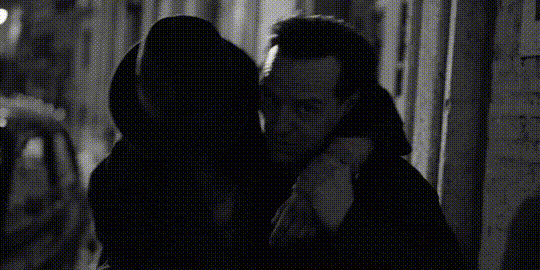
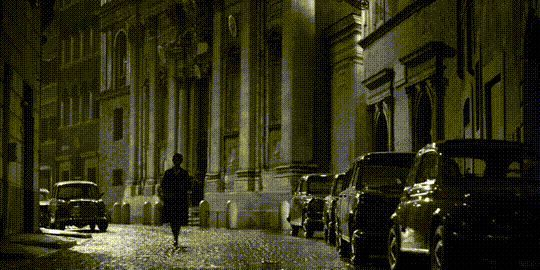
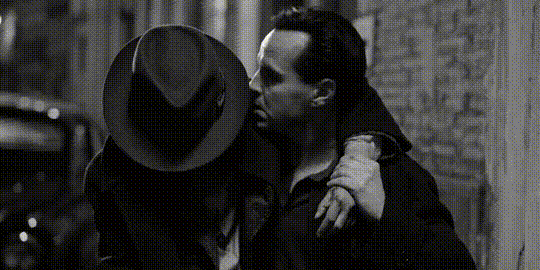
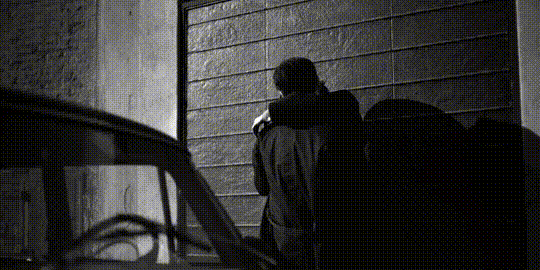


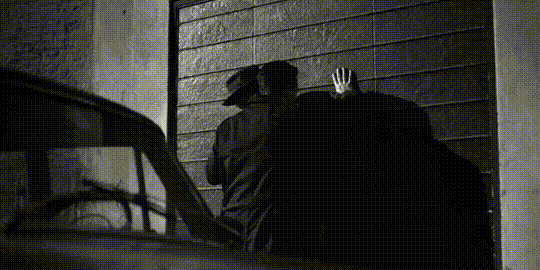
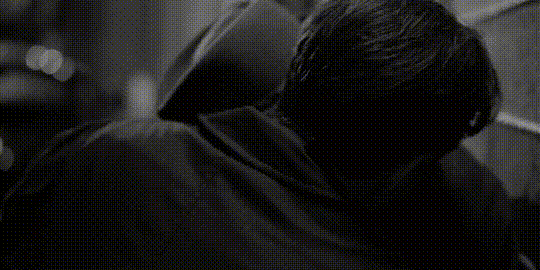
ripley - v lucio
179 notes
·
View notes
Text
vrchat screenshot redraw.


@silverxcristal @octyfish
#spiderverse#fnaf#miles morales#miguel o'hara#moondrop#fnaf moon#five nights at freddy's#astv#vrchat#artworks#redraw
1K notes
·
View notes
Text
oh. My. God. You get iiit!! I gasped so hard I started caughing! Like dude you could have just pretended he was drunk and yet you choose the smooche
i just don't know how anyone acting normal when tom ripley kissed freddie miles' corpse right on the lips
#Why was it so tender?!#Toms entire interaction with dead Freddie was such an odd combination of tender and cold#i should not be as obsessed as I am#Ripley#ripley 2024#ripley netflix#tom ripley#freddie miles
33 notes
·
View notes